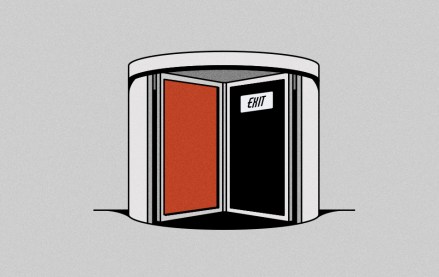As fast fashion falls out of style, H&M looks to reinvent itself as a champion for the environment
Images of models wearing H&M x Versace were common a few years ago inside H&M stores. These days, you’re likelier to see the same models, just wearing a dress made of recycled plastic. It’s just one of the ways H&M is hoping that an environmentally conscious rebranding can help it bounce back from the rough patch it has been in.
In January, the Swedish fast-fashion giant reported its sixth consecutive quarter of reduced profits. In February, the company announced plans to close 160 stores throughout 2019.
“It has been a challenging year for H&M group and the industry,” the company said in a statement.
As fashion trends evolve, H&M has found itself increasingly caught in the middle between the extremes of fashion. On the one hand, people looking for quality can find sturdier products from other high-street brands and retailers like Nordstrom or Topshop, while customers looking for something cheap and quick can go to any number of ultra-fast Instagram brands like Fashion Nova.
It leaves H&M, which has been at the forefront of “fast fashion” for decades, scrambling to distance itself.
“The category of fast fashion is where a lot of our obvious competitors are,” says Emily Scarlett, H&M’s head of communications. “But sustainability is important to us and for us that’s not very fast fashion. A lot of what we do is future-oriented. I don’t know if we are ambivalent about that label — we certainly get called that — but we are thinking about how can change the myth around ‘fast fashion’”
In the past few years, sustainability has emerged as a major focus of H&M’s reinvention. The brand has unveiled numerous highly ambitious goals around reducing its environmental impact.
“When we talk about the climate goal of being completely climate positive by 2040, that’s across the entire chain,” Scarlett says. “It’s the old ‘With great power comes great responsibility’ thing. We are large but that means we have an opportunity to make a big impact on sustainability.”
But perceptions do not change overnight. Customers’ primary experience with H&M is in-store, an area where the brand has notoriously struggled to grow beyond the cluttered racks full of cheap, discounted clothing.
CEO Karl-Johan Persson, referring to the company’s financial results during last year’s annual earnings call, acknowledged this, saying, “The weakness was in H&M’s physical stores where the changes in customer behavior are being felt most strongly and footfall has reduced with more sales online.”
H&M’s efforts toward sustainability are in line with how popular sustainable fashion has become, particularly among younger consumers. A survey of consumers by technology firm CGS found that 70 percent, the majority of which were Gen Z, said sustainability was a major factor for them when choosing to purchase a product.
“While Gen-Z and millennial customers are driving this demand they are also pushing for sustainable offers and visibility within fashion businesses more than their older counterparts,” says Kayla Marci, a market analyst at retail platform Edited. “And fast fashion retailers are reacting to appear more eco-friendly to this cohort.”
Marci notes that fast fashion retailers are well aware of this trend. H&M increased offerings from their Conscious brand (the company’s sustainability line) by 35 percent in the U.S. (comparing Q4 2018 to Q4 2017) and 30 percent in the U.K.
This focus on sustainability could be seen as in direct opposition to H&M’s long-standing status as one of the biggest names in fast fashion. “There is certainly a conflict between fast fashion and sustainability today — in that fast fashion produces a vast number of units, and more often than not, they won’t be of the highest quality,” says Diana Verde Nieto, founder and CEO of Positive Luxury, a company that advocates for more environmental awareness in fashion. “With sustainable production comes sustainable consumption; so thereby fast fashion products may not be valued by the consumer as much, making them less mindful in the way they use and ultimately dispose of them.”
More in Marketing

Pitch deck: How Amazon is recasting Twitch as a core part of its CTV pitch
Amazon is positioning Twitch as a defining asset in its CTV ambitions.

Netflix transforms former mall department stores into experiential venues
The location in Dallas opens this week, and one at the King of Prussia mall near Philadelphia opened last month.

Future of Marketing Briefing: AI has created a new talent paradox in programmatic agencies
The job isn’t execution anymore. AI handles that. The job is judgement.








